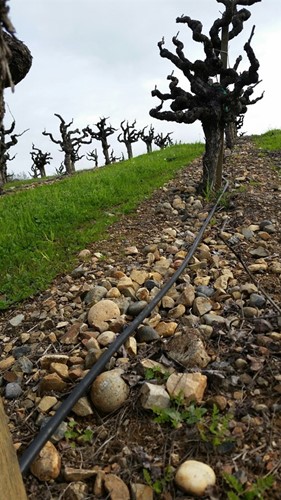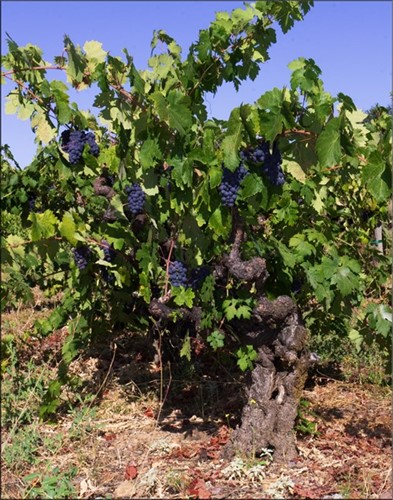Vino In My Dino
Zin Valley
June 3, 2016 15:21
I was asked recently what sets Dry Creek Valley Zinfandel apart from all the other Zins from various appellations? Just what is so very special? I think in a nutshell it is site specific meaning the ‘where’ rather than the ‘how’. Winemaking definitely makes its’ mark but what does growing Zinfandel in Dry Creek Valley offer?
- Hillsides, plain and simple. Gentle rolling hills with fertile rocky soil. On parts of our Home Ranch you’ll see many types of soil but it is the hillside slant which challenges the vine, discourages overwhelming growth and provides the foundation for the ‘Dry Creek’ characteristics of berry and spice.
- Climate, one suited for ripening grapes combined with cooling marine fog that settles in at night. This brings temperatures down substantially and helps to develop the right combination of ripening, acidity and pH which equals a balanced Zin.
- Head pruned vines. This is borne of 89 years of vineyard know-how. It is how all vineyards were originally planted until the latter part of the 20th century when vine trellising and cordon arms became the standard for planting Chardonnay, Cabernet Sauvignon and the like. This style developed the markers of great wines, giving the grower the opportunity to better ripen the fruit. We tried it and put a few acres of our Zinfandel on a wire. Now we are replanting back to the original head pruned style because we found Zin doesn’t like to be strung out-it prefers to keep the fruit close to the trunk of the vine where it ripens more evenly.
My suggestion is to compare and contrast. Pick up some of our Mother Clone Zinfandel and bring in another 2 or 3 other Zins from Paso Robles and the cooler Russian River Valley. Or even 3 from Dry Creek Valley. Invite friends, educate your palate, and, my favorite part, enjoy the wines for their stories, where they came from and who made them.
A mid-winter shot shows our Mother Clone Zinfandel on the Home Ranch.

Near harvest time, one of our oldest vines continues to produce fruit, now over 100 years old. Note where the crop has set.

Categories
- COVID
- Follow the Vineyard
- Note from Home
- PairItWithPed
- Pandemic
- pedroncelli
- Port
- Postcards from Home
- Pruning
- Seasons in The Cellar
- Tasting Room
- Thanksgiving
- Vintage Notes
- Winemaking
- Women's History Month
Recent posts
-
91 Years Later
-
Come Over October: It's About Community
-
Come Over October
-
A Legacy Continues!
-
Everything Old is New Again
Popular tags
- OpenThatBottleNight
- Harvest 2022
- Oak
- cooking with wine
- Sauvignon Blanc
- Four Grapes Port
- Block 007 Cabernet Sauvignon
- family
- Lake Sonoma
- Cookies
- Cabernet Sauvignon
- Pruning
- Pedroncelli
- cheese
- Crop set
- American Oak
- Pandemic
- Courage Zinfandel
- food and wine
- COVID Coffee Chat
- Schotzki
- Anniversary
- note from home
- 1974 Cabernet Sauvignon
- Bushnell Vineyard
- Sonoma County
- Merlot
- Homecooking
- Rosé
- Recipes
- Library Wine
- Estate Vineyard
- PairitwithPed
- Heat wave
- Mother Clone
- Follow the Vineyard
- Finding Your Roots
- Holding steady
- Easter
- Seasons in The Cellar
- Pantry
- COVID19
- Dry Creek Valley
- newsletter
- French Oak
- Reserve
- Down to Earth
- Habit
- Barrels
- Cellar Master





